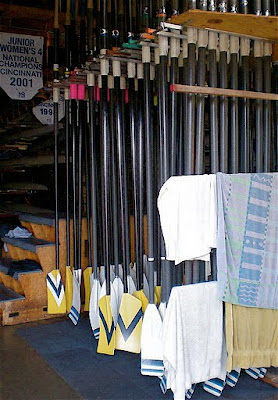Paeonia suffruticosa 'Yoshinogawa' May 2009
Allium unifolium June 2009
Erigeron glaucus 'Sea Breeze' June 2009
Penstemon x mexicali 'Red Rocks' June 2009
Weigela florida 'Variegata' May 2009
Pink isn’t just for little girls. Many pink flowers have a subtle elegance. Pink is almost always delightful. The range of shades of pink is amazing. There is nothing more beautiful than Paeonia suffruticosa in full bloom. (Be advised that they are often described as red, which is utterly false.) Pink Poppies & Camellia are also quite lovely. Use pink with red for a warm glow. Pink with blue & purple is very rich. Pink with yellow & especially orange is very striking. Pink with white is very soothing. Unless you are an absolute purist, I think Weigela florida 'Variegata' is a must for a white garden. Pink blends well in a red garden, lends excitement to a yellow garden & adds a pleasing contrast to a blue garden. Any garden looks pretty in pink.
Trees
Cercis canadensis (Eastern Redbud)
Cornus kousa ‘Satomi’ (Korean Dogwood)
Halesia carolina ‘Rosea’
Lagerstroemia indica ‘Tuskegee’ (Crape Myrtle)
Magnolia x soulangeana ‘Pink Suberba’
Malus ‘Strawberry Parfait’ (Crabapple)
Prunus serrulata (Flowering Cherry)
Shrubs
Abelia x grandiflora ‘Edward Goucher’
Calluna vulgaris ‘County Wicklow’ (Heather)
Camellia japonica or sasanqua
Cistus skanbergii (Pink Rockrose)
Daphne odora
Deutzia x elegantissima ‘Rosealind’
Erica carnea ‘Springwood Pink’ (Heath)
Escallonia ‘Jubilee’
Hydrangea macrophylla ‘Forever Pink’
Kalmia latifolia ‘Olympic Fire’ (Mountain Laurel)
Kolkwitzia amabilis (Beauty Bush)
Paeonia suffruticosa (Tree Peony)
Pieris ‘Valley Valentine’ (Lily of the Valley Shrub)
Rhododendron ‘Pink Pearl’ or ‘Yaku Princess’
Ribes sanguineum (Flowering Currant)
Rosa ‘Queen Elizabeth’ (Grandiflora Rose)
Weigela florida 'Variegata'
Perennials
Allium unifolium
Amaryllis belladonna (Naked Lady)
Anemone x hybrida
Astilbe x arendsii ‘Rheinland’ (Ostrich Plume)
Bergenia crassifolia
Clematis integrifolia ‘Hanajima’
Darmera peltata
Dierama pulcherrimum (Fairywand)
Dicentra formosa or spectabilis (Bleeding Heart)
Erigeron glaucus 'Sea Breeze'
Gaura lindheimeri
Geranium sanguineum (Bloody Cranesbill)
Hemerocallis ‘Fairy Tale Pink’ or ‘Lullaby Baby’
Hyacinthus orientalis ‘Pink Pearl’
Lilium ‘Chianti’ (Asiatic Lily)
Lychnis coronaria (Crown Pink)
Nerine bowdenii
Monarda x didyma ‘Coral Reef’ (Beebalm)
Paeonia ‘Bowl of Beauty’ or ‘Flame’ (Peony)
Papaver orientale ‘Little Dancing Girl’ (Oriental Poppy)
Penstemon x mexicali 'Red Rocks'
Primula vialii
Sedum ‘Brilliant’
Stachys byzantina (Lamb’s Ears)
Tradescantia ‘Pink Chablis’
Tulipa ‘Angelique’ or 'Menton' (Tulip)
Groundcovers & Trailers
Arctostaphylos uva-ursi ‘Vancouver Jade’ (Kinnikinnick)
Armeria maritima (Thrift)
Cyclamen hederifolium
Fragaria frel ‘Pink Panda’
Lamium maculatum
Phlox subulata (Moss Pink)
Sedum spurium
Thymus ‘Pink Chintz’ or serpyllum (Creeping Thyme)















































































